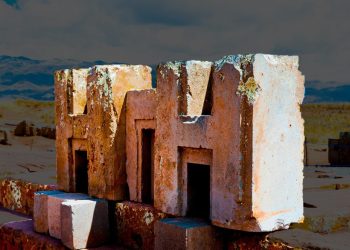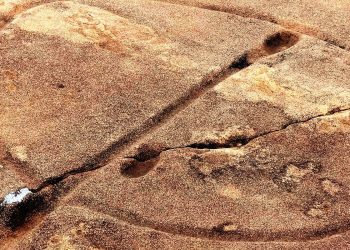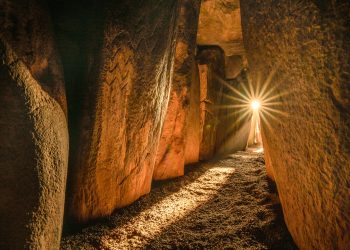As I’ve written in previous articles, thousands of years ago, on a global scale, ancient cultures decided to build massive pyramids reaching for the skies. The ancients erected some of the most impressive structures history has ever seen. But before the pyramids were built, someone had to design them. Envision them. Imagine them. In the case of the Egyptian Pyramids, there’s one man who did just that. He was the first pyramid architect, a man forgotten in history.
History of a Pyramid
The largest pyramid (discovered to date) by volume is the Great Pyramid of Cholula, located in Mexico. For thousands of years, the largest structures on Earth were pyramids—first the Red Pyramid in the Dashur Necropolis and then the Great Pyramid of Khufu, both in Egypt—the latter structure being the only standing Seven Wonder of the Ancient World.
But how did the Pyramids in Egypt remain standing until this day? The key is planning. And Imhotep is the man who envisioned the pyramids and how they should look before any other builder in ancient Egypt. Even though the pyramids of Giza are the most famous in Egypt, they were not the first. Before erecting pyramids, the Pharaohs built massive mastabas, eventually serving as royal burials.
From Mastabas to pyramids?
But eventually, mastabas were not enough, and the Pharaohs wanted something more. To trace back the history of pyramid building, we travel to Saqqara, just northwest of Memphis, where the Pyramid of Djoser still stands today. Built around 2,620 before Christ during Egypt’s third dynasty, the Stepped Pyramid of Djoser was conceived by Imhotep, the man who is credited with coming up with the idea of ‘stacking’ mastabas on top of each other and eventually building the very first stepped pyramid. Imhotep is, therefore, responsible for developing the first Egyptian pyramid.
A true genius?
Imhotep was a true ancient genius. He is referred to among scholars as one of the first Egyptian polymaths: he was a poet, poet, judge, engineer, magician, scribe, astronomer, astrologer, and physician. Some scholars have considered Imhotep, Hippocrates, and Charaka as the fathers of early medicine. But more than just a doctor, this man was one of the chief officials of Pharaoh Djoser and a man who changed and revolutionized architecture in ancient Egypt. Some scholars argue that Imhotep may have devised the first known use of stone columns to support a building.
Deified two millennia later
Imhotep’s importance was that around 2,000 years after his death, the ancient Egyptians venerated him as a god. Eventually, Imhotep was equated with Thoth, the god of architecture, mathematics, and medicine and patron of scribes. Eventually, with the completion of th pyramid of Djoser, the structure Imhotep had designed became popular, inspiring the massive pyramid built at the Giza plateau. Had Imhotep not designed and built the pyramid of Djoser, who knows if or not the Pyramid at Giza would stand where they are today?
Have something to add? Visit Curiosmos on Facebook. Join the discussion in our mobile Telegram group.











